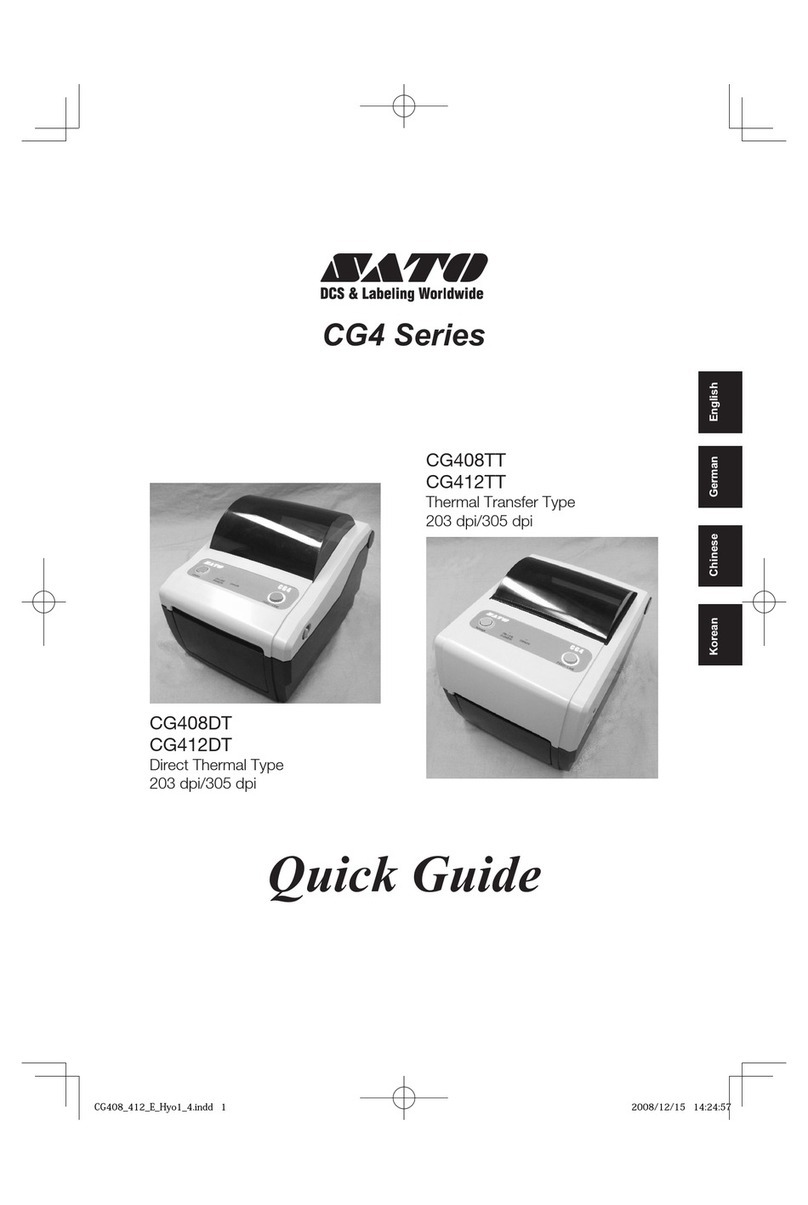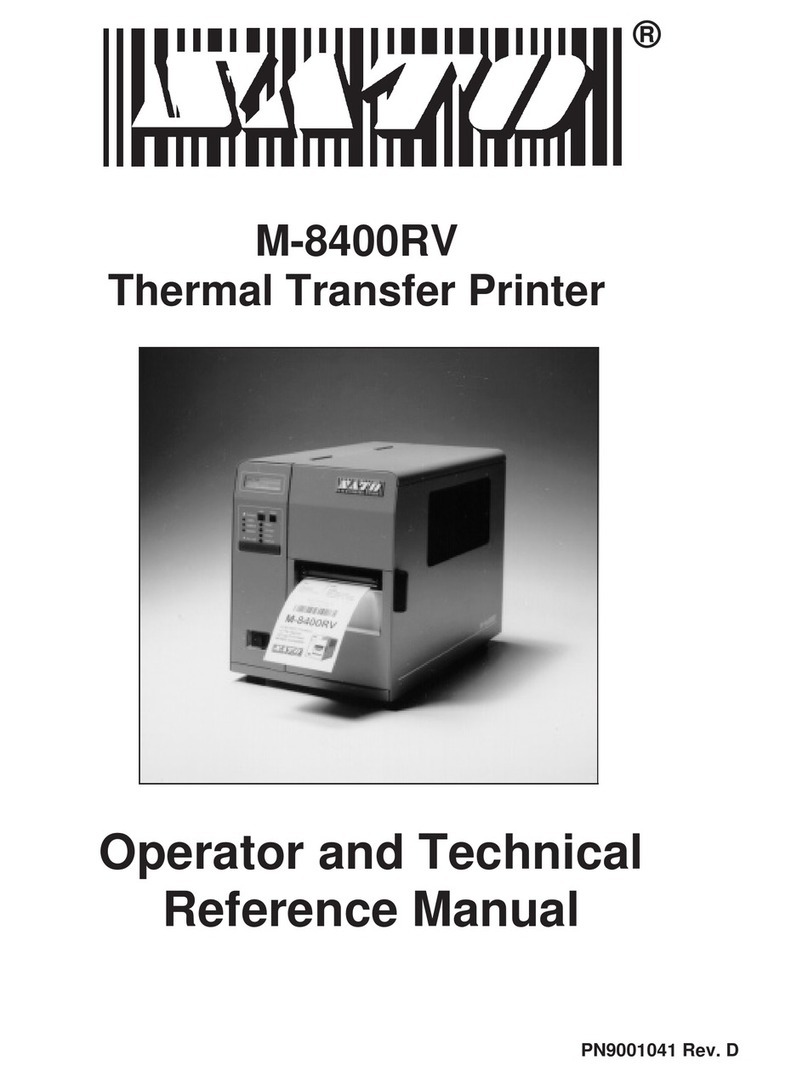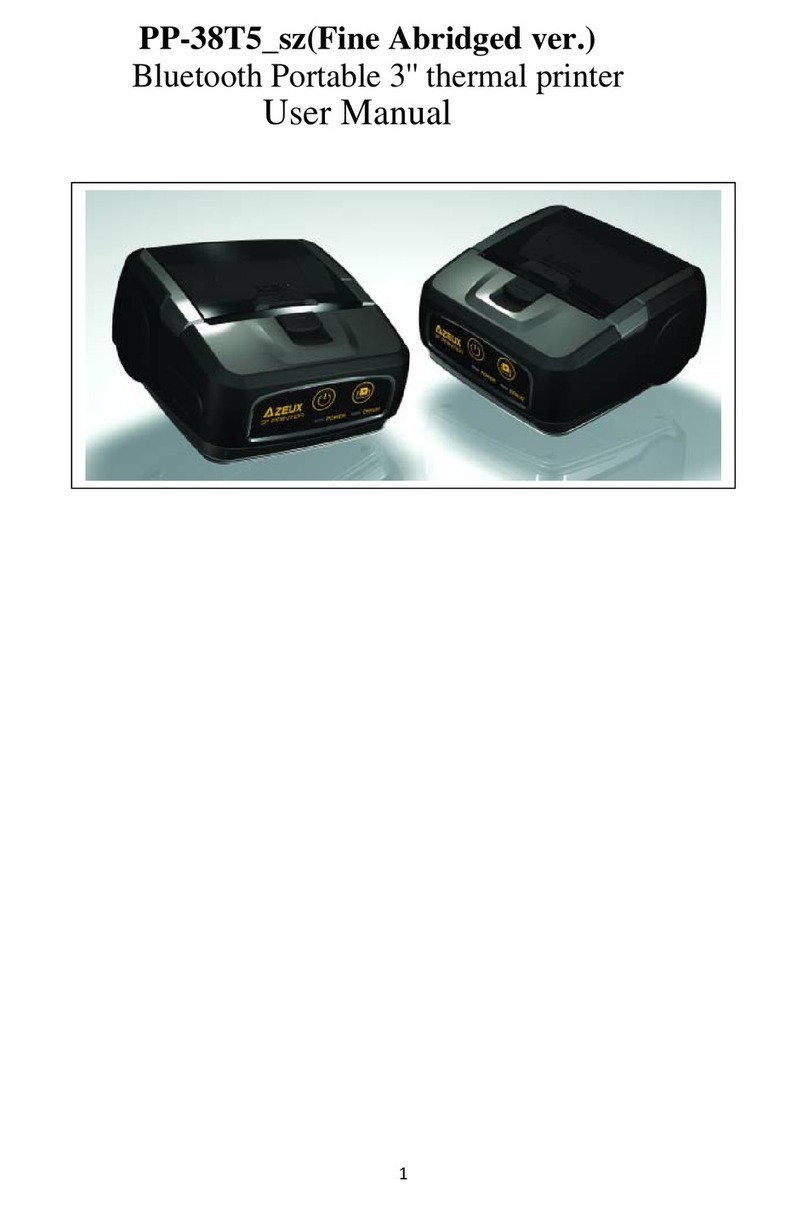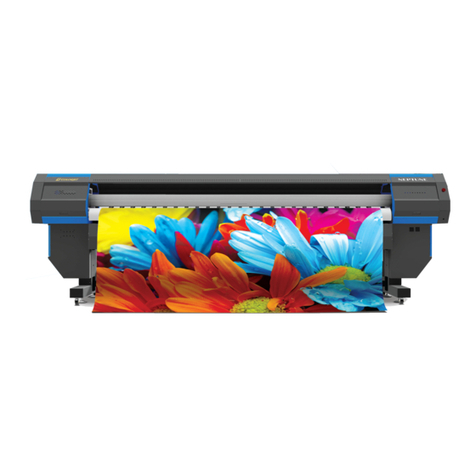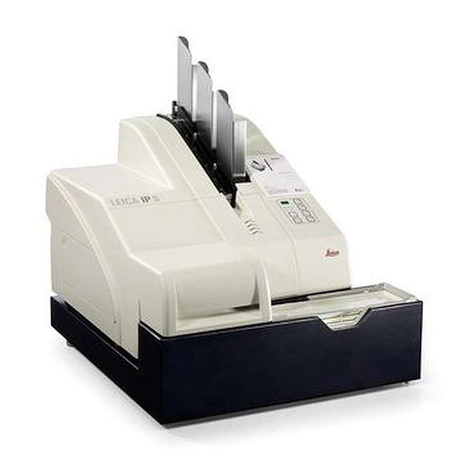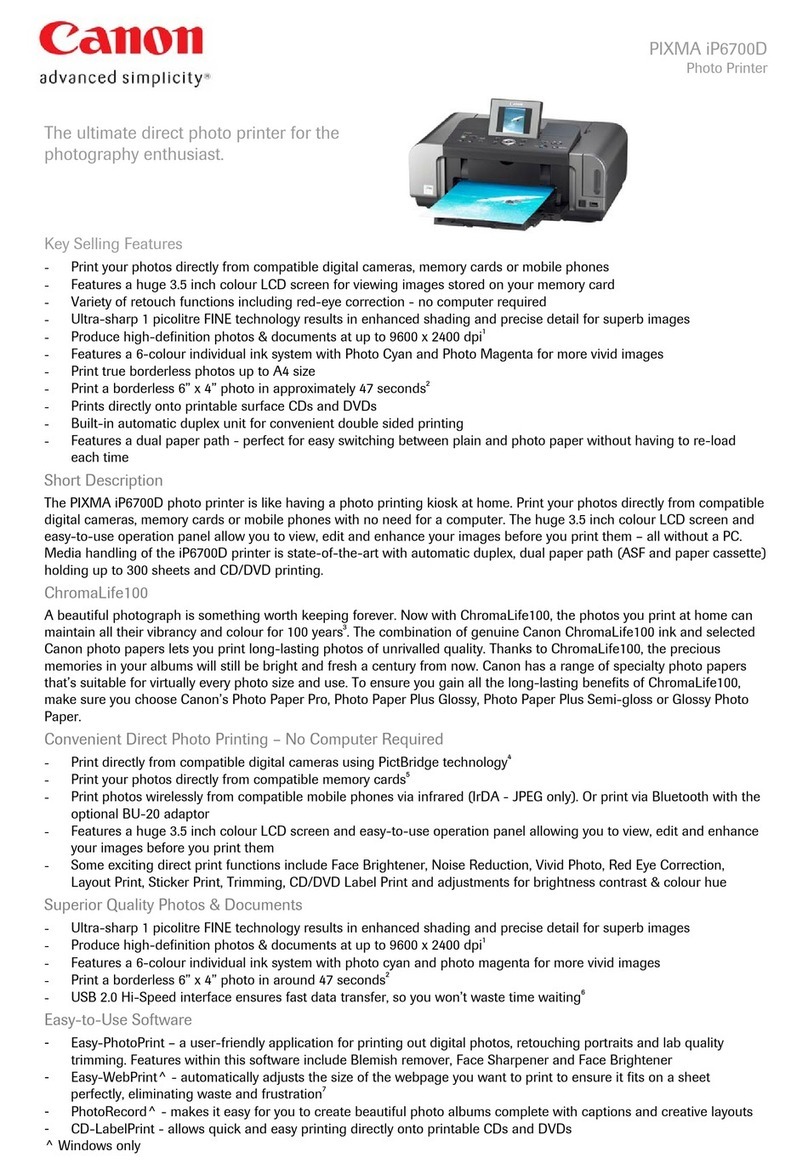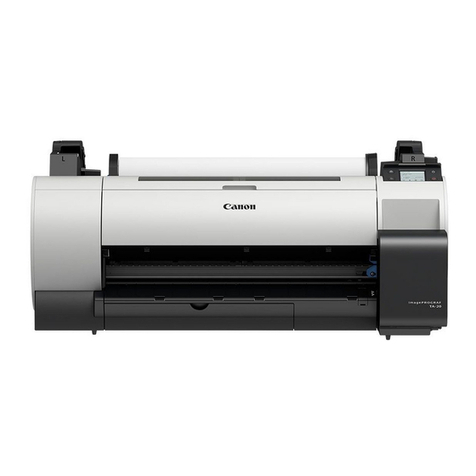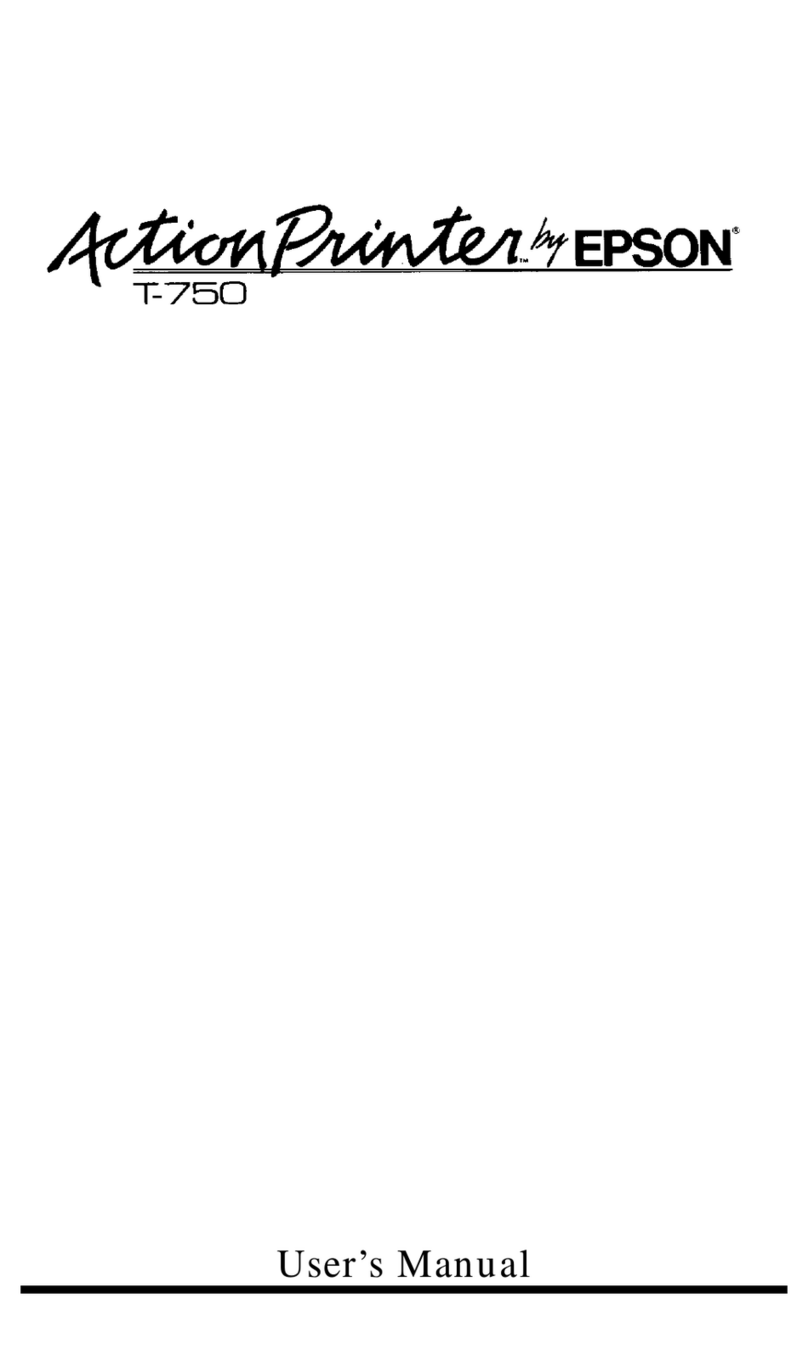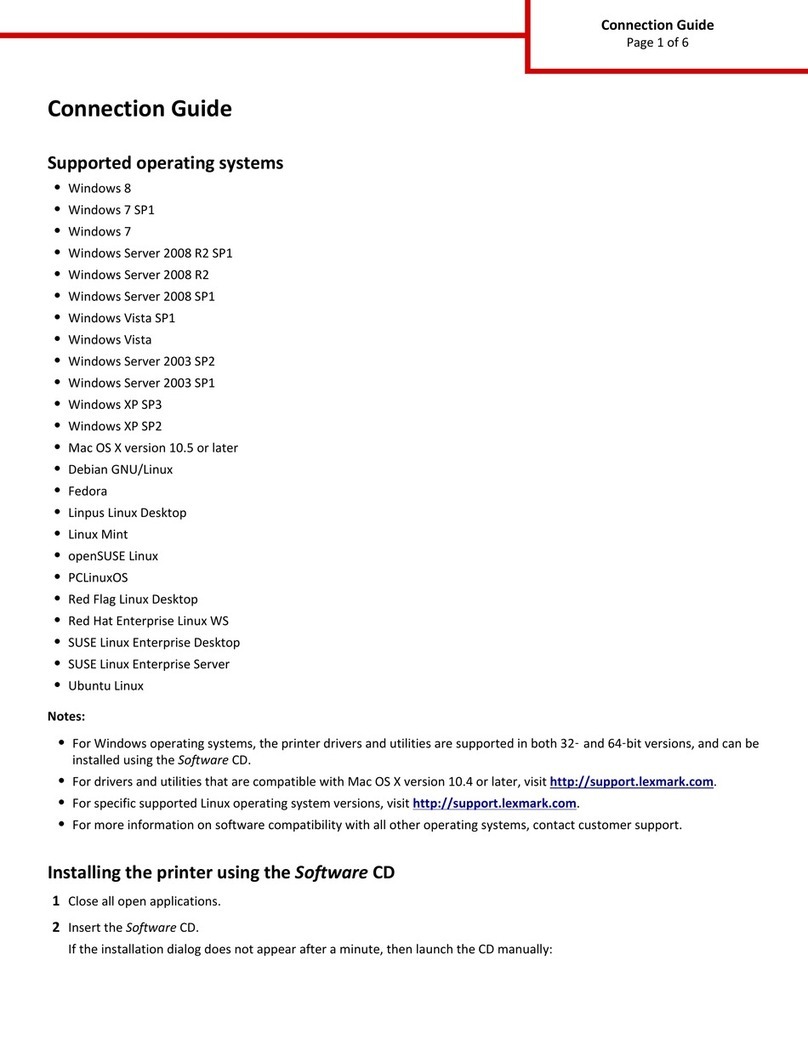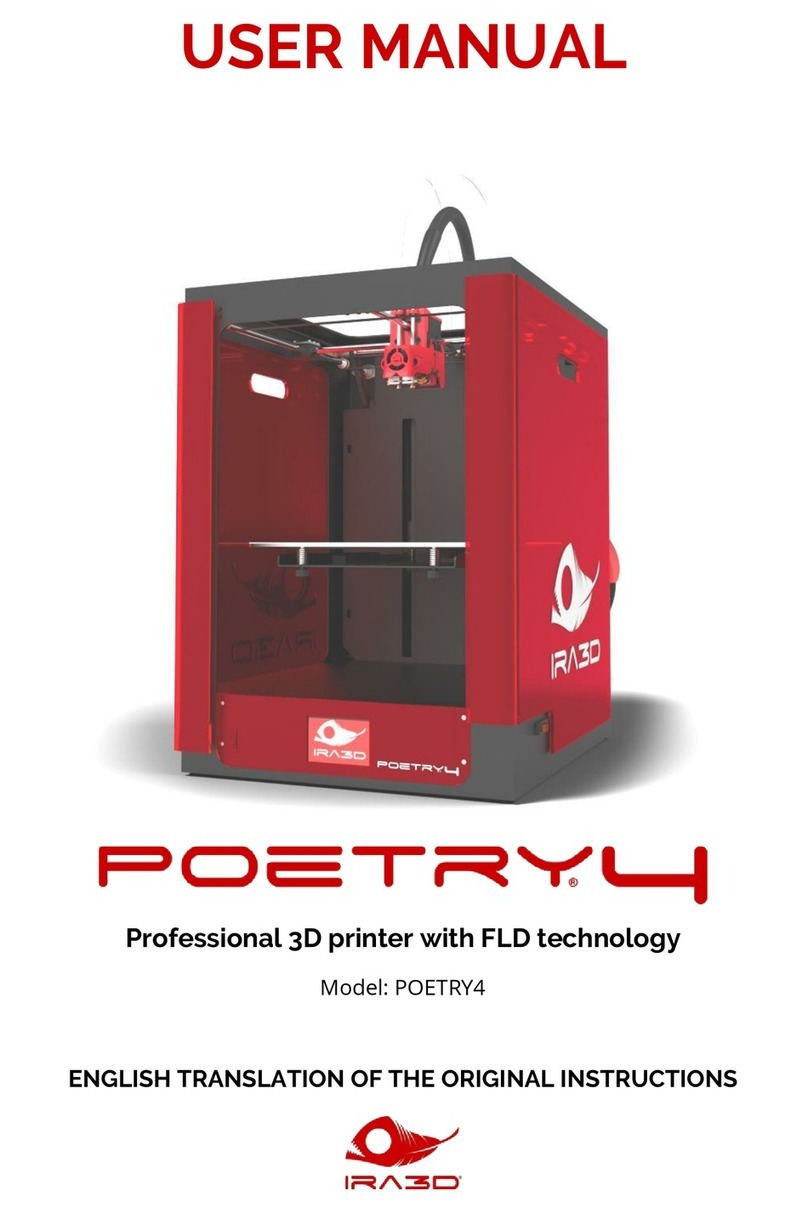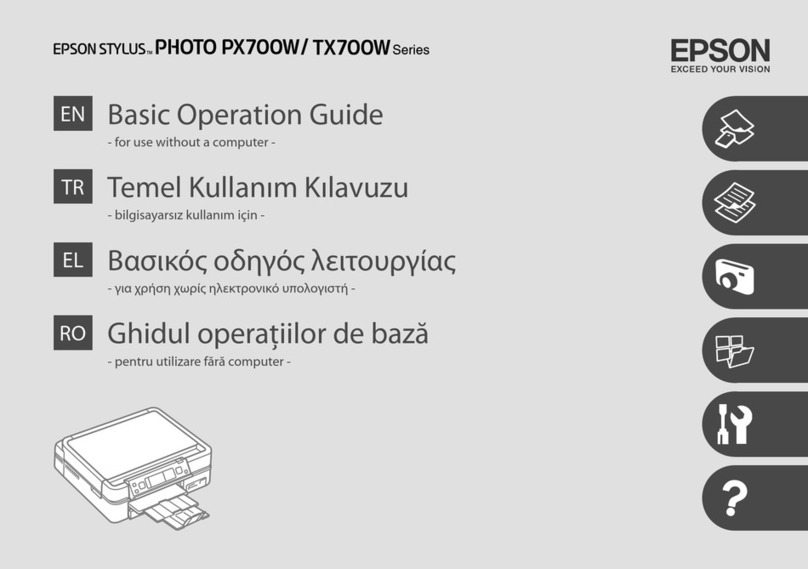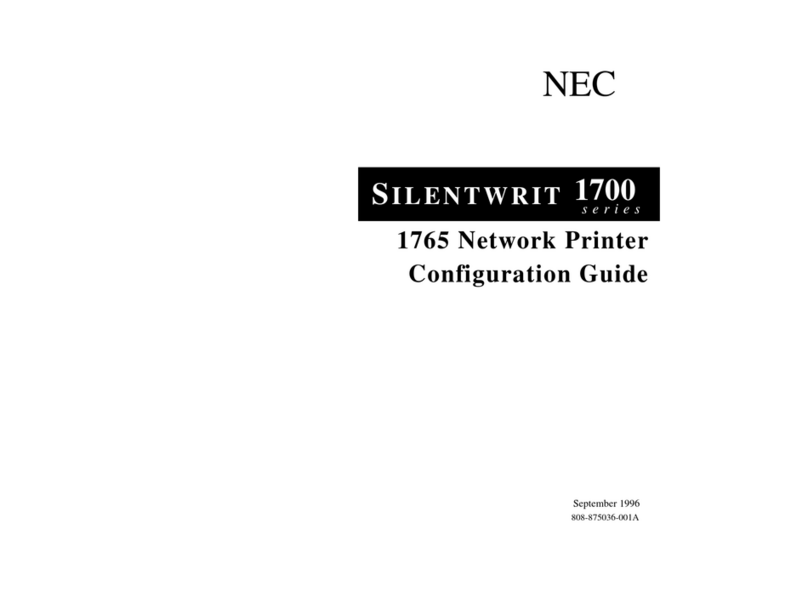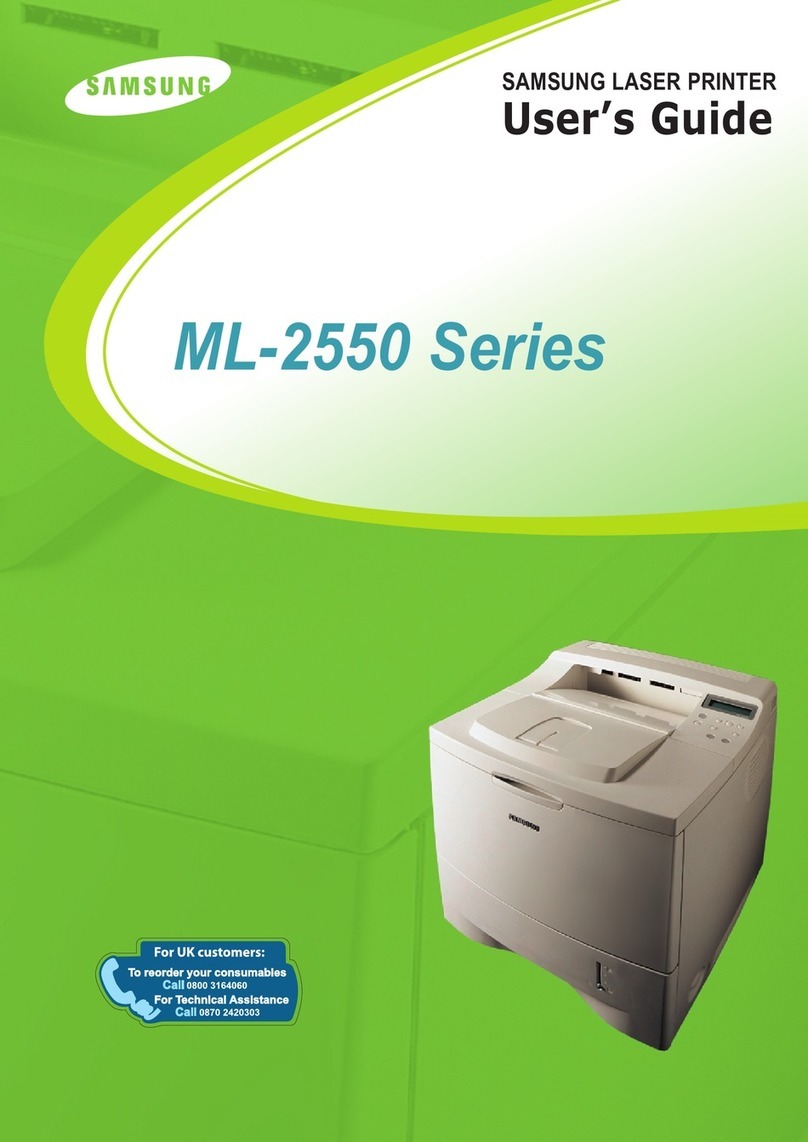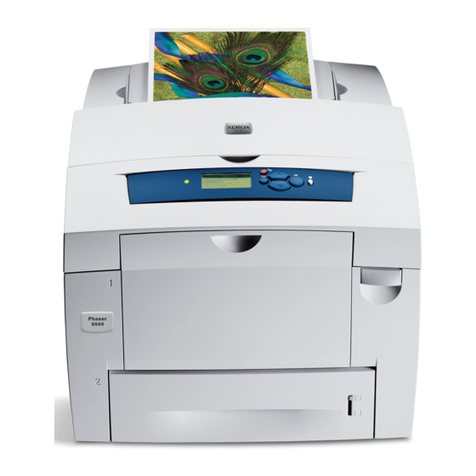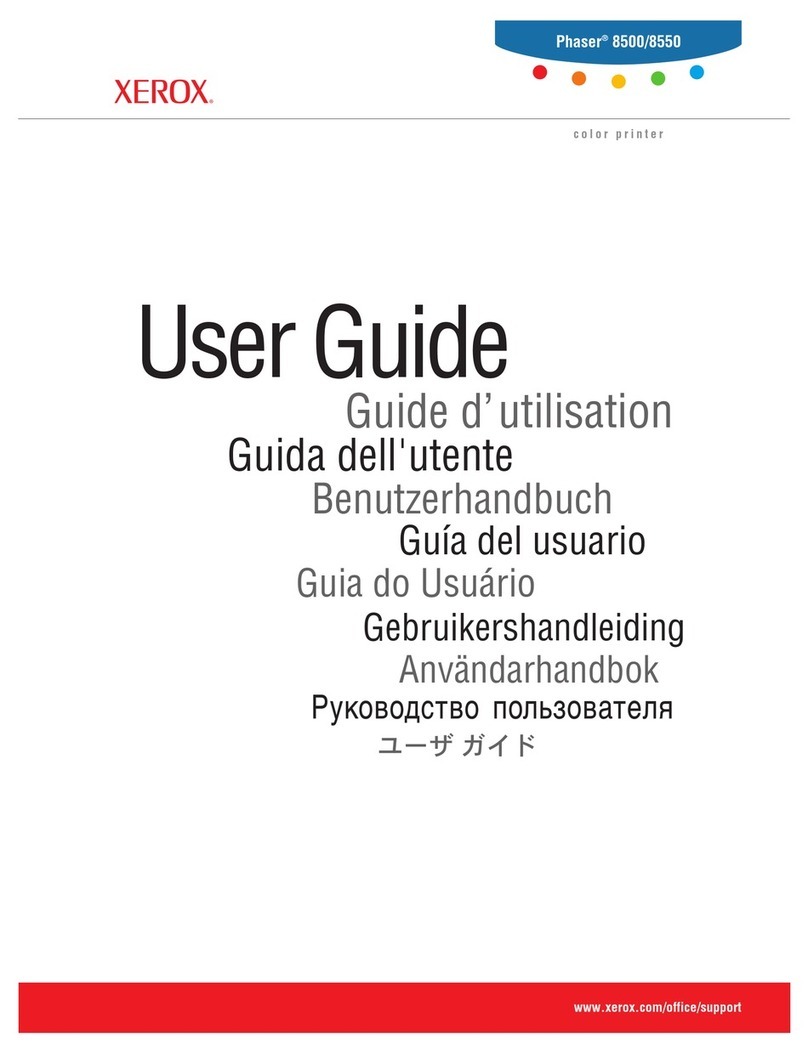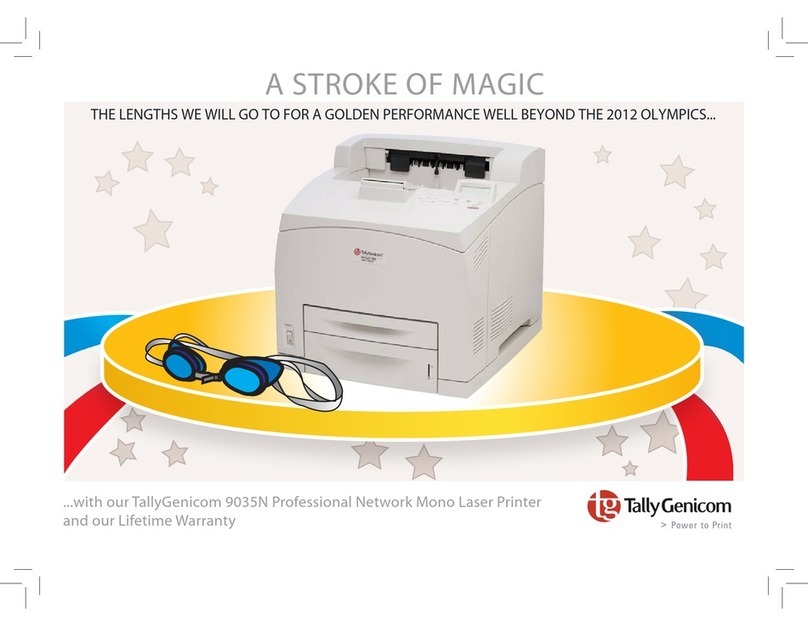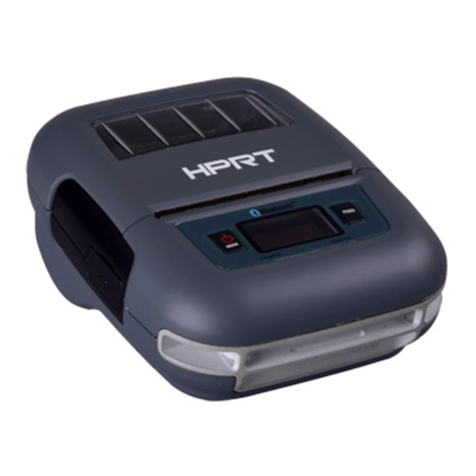SATO M-84Pro Series User manual

PN 9001111A
M84PRO
Thermal Transfer Printer
SERVICE MANUAL

SATO America, Inc.
10350A Nations Ford Road
Charlotte, NC 28273
Main Phone: (704)644-1650
Tech Support Hotline: (704)644-1660
Tech Support Fax: (707)644-1661
E-Mail: satosales@satoamerica.com
www.satoamerica.com
© Copyright 2003
SATO America, Inc.
All rights reserved. No part of this document may be reproduced or issued to third parties in any
form whatsoever without the express permission of SATO America, Inc. The materials in this
document is provided for general information and is subject to change without notice. SATO
America, Inc. assumes no responsibilities for any errors that may appear.
Preliminary 02/01/03

PN 9001111A
TABLE OF CONTENTS
INTRODUCTION
General Description 1-2
Theory Of Operation 1-2
Switches And Indicators 1-4
Connection Ports 1-4
TECHNICAL DATA
Physical Characteristics 2-1
Power 2-1
Enviromental 2-1
Print 2-1
Media 2-2
Ribbon 2-2
Sensing 2-2
Interface Modules 2-2
Processing 2-3
Character Font Capabilities 2-3
Bar Code Capabilities 2-4
Regulatory Approvals 2-4
INTERFACE SPECIFICATIONS
Interface Types 3-1
Receive Buffer 3-1
IEEE1284 Parallel Interface 3-3
RS232 Serial Interface 3-4
Universal Serial Bus (Usb) Adapter 3-6
Local Area Network (Lan) Interface 3-6
Bi-Directional Communications 3-6
ACCESSORIES INSTALLATION
Label Cutter 4-1
Dispenser 4-4
Flash Memory 4-7
PCMCIA Memory Expansion 4-8
Real-time Clock 4-10
Interface Module Upgrade 4-12
CONFIGURATION
Dip Switch Panels 5-1
RS232 Transmit/receive Setting 5-1
Printer Setup 5-3
Default Settings 5-7
Software Default Settings 5-7
Potentiometer Adjustments 5-8
LCD Panel Printer Configuration 5-9
TROUBLESHOOTING
Error Signals 6-1
Troubleshooting Table 6-2
Troubleshooting Procedures 6-4

PN: 9001111A
REPLACEMENT PROCEDURES
Main Circuit Board 7-1
Interface Board (Module) 7-3
Daughter Board 7-4
Memory Board (Card) 7-5
Power Board 7-5
Panel Board 7-6
LCD Board 7-7
Fuse 7-8
Motor 7-9
Platen Roller 7-11
Feed Roller 7-12
Timing Belt 7-14
Print Head 7-18
Label-out Sensor Switch 7-20
Label Position Sensor 7-22
Ribbon Sensor 7-23
Cutter Belt 7-25
Cutter Circuit Board 7-27
ADJUSTMENT PROCEDURES
Print Head Position Alignment 8-2
Print Head Balance 8-3
Ribbon Guide Plate 8-5
Feed Roller 8-6
Timing Belt 8-8
Pitch Sensor Setup For Notched Tags 8-9
Print Position 8-10
Label Gap Sensor 8-11
Eye-Mark Sensor 8-13
Offset Label Stop Position 8-14
LCD Display 8-14
Print Darkness 8-15
FACTORY RESETS
Factory Settings/Test Print 9-1
Clear Head Counters 9-2
Clear Dispenser Counter 9-3
Clear Cutter Counter 9-4
Clear EEPROM 9-5
DIAGRAMS & SCHEMATICS
Housing Cover Removal & Installation 10-1
Media Loading 10-2
Ribbon Loading 10-2
Paper Specifications 10-3
Accessories & Sensors Location 10-4
Print Position Reference 10-5
Print Operation Sequence 10-6

M84Pro Service Manual PN: 9001111A Page 1-1
1
INTRODUCTION
This manual is laid out consistent with the product discussed and provides all of the information
required for general printer configuration, troubleshooting, and maintenance. For specialized
programming, refer to the Programming Manual also provided with the product.
Step-by-step maintenance instructions are provided with typical problems and solutions. It is
recommended that you become familiar with each section before installing and maintaining the
printer.
This manual also incorporates the use of special information boxes. Examples of these boxes
and the type of information provided in each, are below.
A comprehensive Table Of Contents provided at the front of this manual facilitates rapid
movement within. The contents identify the different unit sections and their respective sub-
sections. Each references the page number of their commencement.
The pages of this manual have embedded headers and footer to assist the user in identifying his
or her exact position within the manual. The header provides the section number followed by its
name. The footer identifies the product on the left, the manual’s part number in the center, and
the page number to the right side of the page.
Page enumeration is two-part with each separated by a hyphen. The first character set
references the section number and the second identifies the page number. Page numbers begin
with the numeral (1) one at the commencement of a new section and ascends sequentially.
WARNING: PROVIDES INFORMATION THAT, IF UNHEEDED MAY
RESULT IN PRESONAL INJURY.
CAUTION: PROVIDES INFORMATION THAT, IF UNHEEDED MAY RESULT
IN EQUIPMENT DAMAGE.
NOTE: Provides helpful hints to assist in performing the tasks at hand.
LCD DISPLAY: Provides the specific display that should be visible on the
LCD at that point.

Section 1: Introduction
M84Pro Service Manual PN: 9001111A Page 1-2
GENERAL DESCRIPTION
The M84Pro printer was designed for continuous industrial and commercial applications as self-
evident with its uncompromising all-metal housing, 203 to 609 dpi resolution, and label width
capacity up to 5 inches wide.
This printer uses standard SATO programming language with specific values for print
resolutions. These values are specified in “dots” and will vary depending upon the printer
resolution and the amount of memory available for label imaging.
The M84Pro was designed to be compatible with preceding M-8400 series printers. The main
difference is how it receives the command sequence and how it responds to certain commands.
Refer to the Operator and Technical Reference Manuals for additional information.
Figure 1-1, Primary Components
THEORY OF OPERATION
When activated, the media and ribbon (where applicable) are fed in conjunction past the print
head by an integrated drive train. The drive train is electric, stepper motor driven, coupled to a
gear configuration located on the left side of the printer chassis. Paper guides within the chassis
assembly ensure that the media remains properly positioned during the printing process and is
fed unimpeded through the front cover. The exhausted ribbon material is rewound onto a take-up
core inserted onto drive-train driven spindles.
A series of strategically located sensors send signals to the processing unit. The processing unit
in turn sends response signals to the various features based on programmed and received data.
Correct signals initiate print head activity.
LEFT HOUSING COVER
FRONT HOUSING COVER
PANEL COVER
RIGHT HOUSING COVER
TOP HOUSING COVER

Section 1: Introduction
M84Pro Service Manual PN: 9001111A Page 1-3
Figure 1-2, Primary Components
Figure 1-3, Primary Components
LCD BOARD
IEEE1284+RSBOARD
PANEL BOARD
BELT CONFIGURATION
DAUGHTER BOARD
INTERFACE BOARD
MAIN CIRCUIT BOARD
POWER BOARD
PRINT ASSEMBLY
STEPPER MOTOR
LABEL HOLD DOWN
LABEL ROLL HOLDER
RIBBON REWIND SPINDLE
RIBBON SUPPLY SPINDLE
PLATEN ROLLER
LOWER FEED ROLLER
LCD PANEL
OPERATOR
PANEL

Section 1: Introduction
M84Pro Service Manual PN: 9001111A Page 1-4
SWITCHES AND INDICATORS
The table below identifies and defines printer switches and indicators for operator interface. The
accompanying graphics display their locations and appearance.
CONNECTION PORTS
These ports are externally accessible and permit connection of the accessories and attachments
necessary for printer programming and operation. Not listed here, are the connection ports of
circuit boards not externally accessible.
SWITCHES
Power Switch Two position on/off switch that controls power flow to the system.
Line Key Toggles the printer between the on-line and off-line modes. When
on-line, the printer is ready to receive data from the host. Acts as a
pause during print by taking the printer off-line. Also used as a scroll-
and-enter interface for printer setup.
Feed Key Feeds one blank label through the printer when off-line. When the
printer is on-line, another copy of the last label will be printed. Also
used as a scroll-and-enter interface for printer setup.
INDICATORS
LCD Display Dual line x 16 character display. Used for setting operational param-
eters and displaying error conditions.
Power Indicator Illuminates when the power switch is activated.
Label Illuminates when the label supply is depleted.
Ribbon Illuminates when the ribbon supply is depleted.
Error Illuminates when there is a system fault.
On-Line Illuminates when the system is operating.
DIP SWITCHES
DSW2 & DSW3 Sets operational parameters of printer.
DSW1 Used to configure optional RS232 communication card.
CONNECTION PORTS
AC Power Input Connector permits 115V, 50/60 Hz supply via supplied cord.
Interface Port Connector for interface harness. Must be connected for the printer to
be operational. Acceptable interface types are:
• RS232C Serial I/F Module, DB-25
• IEEE1284 Parallel I/F Module, AMP 57-40360
• Universal Serial Bus Adapter
• Ethernet 10/100 BaseT I/F Module
• RS422/485 I/F Module, DB-9
Ext. Interface Port Connector for external control of print cycle. Also supplies power for
optional accessories - AMP 57-60140
Memory Card Slot Slot for the insertion of optional PCMCIA Memory Card
Main Fuse Connection For input power protection - type 3A/250V

Section 1: Introduction
M84Pro Service Manual PN: 9001111A Page 1-5
Figure 1-4, Switches, Indicators, and Connection Ports
LCD DISPLAY
POWER
LABEL
RIBBON
ERROR
ON LINE DISPLAY
PITCH
OFFSET
PRINT
LINE FEED
DSW1 DSW2 DSW3
INDICATORS
LINE KEY
POWER SWITCH
DIP SWITCHES
POTENTIOMETERS
FEED KEY
PANEL COVER REAR COVER
100V - 120V
FUSE T3.15A H 250V
EXT.
I/F
AC POWER INPUT
MAIN FUSE CONNECTI
O
EXT PORT
INTERFACE PORT
MEMORY CARD SLOT

M84Pro Service Manual PN: 9001111A Page 2-1
2
TECHNICAL DATA
All technical data deemed pertinent has been tabulated below for quick reference. Find the
relative section header and then locate the specific type of technical data in th left column.
PHYSICAL CHARACTERISTICS
Width 10.4 Inches (265 mm)
Height 13.4 Inches (341 mm)
Depth 17.1 Inches (435 mm)
Weight 39.7 Pounds (18.0 mm)
POWER
Input Voltage 115/220 Volts AC +/- 10%, 50/60 Hertz +/-1%
Power Consumption 130 Watt Operating, 24 Watt Idle
ENVIRONMENTAL
Operating Temperature 41° to 104°F (5° to 40°C)
Storage Temperature 23° to 140°F (-5° to 60°C)
Storage Humidity 30 to 90% RH Non-Condensing
Operating Humidity 30 to 80% RH Non-Condensing
Electrostatic Discharge 8kV
PRINT
Method Direct or Thermal Transfer
Speed (user selectable) M84PRO-2: 2 to 10 Inches Per Second (50 - 250 mm/s)
M84PRO-3: 2 to 8 Inches Per Second (50 - 200 mm/s)
M84PRO-6: 2 to 6 inches Per Second (50 - 150 mm/s)
Print Module (dot size) M84PRO-2: .0049 Inches (.125 mm)
M84PRO-3: .0033 Inches (.083 mm)
M84PRO-6: .0017 Inches (.081 mm)
Resolution M84PRO-2: 203 Dots Per Inch (8 d/mm)
M84PRO-3: 305 Dots Per Inch (12 d/mm
M84PRO-6: 609 Dots Per Inch (24 d/mm)
Maximum Print Width 4.1 Inches (104 mm)
Maximum Print Length M84PRO-2: 49.2 Inches (1249 mm)
M84PRO-3: 32.8 Inches (835 mm)
M84PRO-6: 14.0 Inches (356 mm)

Section 2: Technical Data
M84Pro Service Manual PN: 9001111A Page 2-2
MEDIA
Minimum Width .87 Inches (22 mm)
Minimum Length
Continuous
Tear-Off
Cutter
Dispense
0.24 Inches (6 mm)
0.63 Inches (16 mm)
1.18 Inches (30 mm)
1.18 Inches (30 mm)
Maximum Width 5.0 Inches (125 mm)
Type Die Cut Labels, Fan-Fold, Tag Stock or Continuous
Maximum Caliper .008 Inches (.21 mm)
Maximum Roll Diameter 8.6 Inches (220 mm), Wound face inward
Minimum Core Diameter 3 Inches (76.2 mm)
RIBBON
Maximum Width 4.4 Inches (111 mm)
Length 1475 Feet (450 m)
Thickness 4.5 Microns, Wound face inward
SENSING
See-Through for labels or tags Movable
Reflective Eye-Mark Movable
Continuous Form Sensor not used.
INTERFACE MODULES
Parallel Port IEEE 1284 Standard
Serial Port RS232C (9600 to 57,6000 dps) Standard
RS422/485 (9600 to 57600 bps) Optional
Ready/Busy or X-On/X-Off Flow Control
Bi-Directional Status
Universal Serial Bus USB Adapter
Ethernet 10/100 Base T, 802.116 Wireless Wi-Fi
Data Transmission ASCII Format
PROCESSING
CPU 32 Bit RISC
FLash ROM 2 Mega-Bytes
SDRAM 16 Mega-Bytes
Receive Buffer 2.95 Mega-Bytes
Memory Expansion See Options and Accessories

Section 2: Technical Data
M84Pro Service Manual PN 9001111A Page 2-3
CHARACTER FONT CAPABILITIES
MATRIX FONTS
U Font 5 dots W x 9 dots H
S Font 8 dots W x 15 dots H
M Font 13 dots W x 20 dots H
XU Font 5 dots W x 9 dots H (Helvetica)
XS Font 17 dots W x 17 dots H (Univers Condensed Bold)
XM Font 24 dots W x 24 dots H (Univers Condensed Bold)
OA Font (OCR-A) M84PRO-2: 15 dots W x 22 dots H
M84PRO-3: 22 dots W x 33 dots H
M84PRO-6: 44 dots W x 66 dots H
OB Font (OCR-B) M84PRO-2: 30 dots W x 36 dots H
M84PRO-3: 30 dots W x 36 dots H
M84PRO-6: 60 dots W x 72 dots H
AUTO SMOOTHING FONTS
WB 18 dots W x 30 dots H
WL 28 dots W x 52 dots H
XB 48 dots W x 48 dots H (Univers Condensed Bold)
XL 48 dots W x 48 dots H (Sans Serif)
VECTOR FONT
Proportional or Fixed Spacing
Font Size 50 x 50 dots to 999 x 999 dots
Helvetica, 10 Font Variations
AGFA RASTER FONTS
A Font CG Times, 8 to 72 pt.
B Font CG Triumvirate, 8 to 72 pt.
DOWNLAODABLE FONTS
Bit Mapped True Type Fonts with Utility Program
CHARACTER CONTROL
Expansion up to 12 x in either the X or Y coordinates.
Charcter Pitch Control
Line Space Control
Journal Print facility
0, 90, 180, and 270 Degree Rotation

Section 2: Technical Data
M84Pro Service Manual PN: 9001111A Page 2-4
BAR CODE CAPABILTIES
Linear Bar Codes Bookland (UPC/EAN Supplemental
EAN-8, EAN-13
CODABAR
Code 39
Code 93
Code 128
Interleaved 2 of 5
Industrial 2 of 5
Matrix 2 of 5
MSI
POSTNET
UCC/EAN-128
UPC-A and UPC-E
Two Dimemsional Data Matriix
Maxicode
PDF417
Micro PDF
Truncated PDF
QR Code
RSS-14 Composite Code
Ratios 1:2, 1:3, 2:5, User definable bar widths
Bar Height 4 to 999 dots, User progammable
Rotation 0, 90, 180, and 270 Degrees
Sequential Numbering Sequential numbering of both numerics and bar codes
Custom Characters RAM storage for special characters
Graphics Full dot addressable graphics, SATO Hex/Binary, .BMP or
.PCX formats
Form Overlay Form overlay for high-speed editing of complex formats
REGULATORY APPROVALS
Safety VCCI (Class B), UL, CUL, CE, FCC (Class B)
RFI/EMI FCC (Class B)

M84Pro Service Manual PN: 9001113A Page 3-1
3
INTERFACE SPECIFICATIONS
This section presents the interface specifications and include detailed information on how to
properly interface the printer with the host system.
INTERFACE TYPES
The parallel interface is a high speed, bi-directional interface that conforms to the IEEE1284
specification (ECP mode on some computers). The interface is also compatible with the older
Centronics parallel interface standard. If it does not detect the correct IEEE1284 signals in the
interface connection, it will automatically operate in the standard Centronics mode which is much
slower. To use the IEEE1284 parallel interface to its fullest capability requires that the host also
have an IEEE1284 compatible interface and that the two be connected with a cable that meets
the IEEE1284 specification. If either of these two are not present, the data rate is reduced.
In order to provide flexibility in communicating with a variety of host computer systems all printers
use a Plug-In Interface Module. The IEEE1284 Interface module is shipped with the printer
unless another interface type is specified at the time of the order. The other interfaces available
is a high speed serial interface, an Ethernet interface, wireless Ethernet, or an optional Universal
Serial Bus (USB) Adapter.
The Parallel interface will probably be the most useful in communicating with IBM PCs and
compatibles. The RS232C Serial interface allows connectivity to a number of other hosts. The
USB interface allows the printer to be connected to a computer that supports peripherals
attached to a USB bus. Up to 127 peripherals can be connected to a single USB port.
RECEIVE BUFFER
The printer may be configured to receive a data stream from a singular or multiple print jobs. The
single job print buffer is generally used by software programs that wish to maintain control of the
job print queue so that it can move a high priority job in front of ones of lesser importance. The
multiple job buffer, on the other hand prints all jobs in the order they are received by the printer,
and the order of printing cannot be changed.
SINGLE JOB BUFFER
The printer receives and prints one job at a time. Each job must not exceed 2.95 MB.
WARNING: NEVER CONNECT OR DISCONNECT INTERFACE CABLES
(OR USE A SWITCH BOX) WITH POWER APPLIED TO EITHER THE
HOST OR THE PRINTER. THIS MAY CAUSE DAMAGE TO THE
INTERFACE CIRCUITRY IN THE PRINTER/HOST AND IS NOT COVERED
BY WARRANTY.

Section 3: Interface Specifications
M84Pro Service Manual PN 9001113A Page 3-2
MULTIPLE JOB BUFFER
The printer is able to continuously receive print jobs while compiling and printing other jobs at the
same time. It acts much like a “print buffer” to maximize the performance of the host and the
printer. When using the RS232C Serial interface, the multiple job buffer uses either the Ready/
Busy with DTR (pin 20) or X-On/X-Off flow control protocols. See these sections for more details.
With an empty receiving buffer, the status of DTR is “high” (in X-On status if using X-On/X-Off)
meaning the printer is ready to receive data. When the receive buffer is holding 2.0 MB of data (1
MB from being full), DTR will go “low” (an X-Off is sent) indicating the printer can no longer
receive data. This condition is called “Buffer Near Full.”
The receiving buffer will not be able to receive more data again until a “Buffer Available” condition
occurs. This takes place when the receiving buffer has emptied so that only 1 MB bytes of data
are being held (2.0 MB bytes from being full). At this time, DTR will go “high” or an X-On is sent to
tell the host that it can again receive data.
All printer error conditions (i.e., label out, ribbon out) will cause the printer to go busy (DTR “low”
or X-Off) until the problem is corrected and the printer is placed on-line. The printer will also be
busy if taken off-line from the front panel.

Section 3: Interface Specifications
M84Pro Service Manual PN: 9001113A Page 3-3
IEEE1284 PARALLEL INTERFACE
The parallel interface for the M-84PRO printers is a Plug-In Interface Module that can be installed
by the user. It conforms to the IEEE1284 specification. It will automatically detect the IEEE1284
signals and operate in the high speed mode. If it does not detect the IEEE1284 signals, it will
operate in the standard Centronics mode, which is significantly slower. For this reason, an
interface cable and host interface conforming to the IEEE1284 specification must be present to
fully utilize the speed capabilities. This interface also operates bi-directionally and can report the
status of the printer back to the host.
SPECIFICATIONS
Printer Connector AMP 57-40360 DDK (or equivalent)
Cable Connector AMP 57-30360 DDK (or equivalent)
Cable IEEE1284 Parallel, 10 ft. (3 m) or less
Signal Level High = +2.4V to +5.0V, Low = 0V to -0.4V
Data Stream <ESC>A . . Job#1 . . <ESC>Z<ESC>A . . Job#n . . <ESC>Z
NOTE: Pin assignments begin with one (1) in the upper right corner and
descend to eighteen (18) in the upper left corner. Pin number nineteen (19)
picks up in the lower right corner and descends to thirty-six (36) in the lower
left.
IEEE 1284 PARALLEL INTERFACE PIN ASSIGNMENTS
PIN SIGNAL DIRECTION PIN SIGNAL DIRECTION
1 Strobe To Printer 19 Strobe Return Reference
2 Data 1 To Printer 20 Data 1 Return Reference
3 Data 2 To Printer 21 Data 2 Return Reference
4 Data 3 To Printer 22 Data 3 Return Reference
5 Data 4 To Printer 23 Data 4 Return Reference
6 Data 5 To Printer 24 Data 5 Return Reference
7 Data 6 To Printer 25 Data 6 Return Reference
8 Data 7 To Printer 26 Data 7 Return Reference
9 Data 8 To Printer 27 Data 8 Return Reference
10 ACK To Host 28 ACK Return Reference
11 Busy To Host 29 Busy Return Reference
12 Ptr Error To Host 30 PE Return Reference
13 Select To Host 31 INIT From Host
14 AutoFD1To H ost 32 Fault To Host
15 Not Used 33 Not Used
16 Logic Gnd 34 Not Used
17 FG Frame Gnd 35 Not Used
18 +5V (z=24k ohm) To Host 36 SelectIn1From Host
1 Signals required for ieee 1284 mode.

Section 3: Interface Specifications
M84Pro Service Manual PN 9001113A Page 3-4
RS232 SERIAL INTERFACE
The High Speed Serial Interface is a Plug-In Interface Module that can be installed in the printer
by the user.
SPECIFICATIONS
Asynchronous ASCII Half-duplex communication
Ready/Busy Hardware Flow Control
Pin 20, DTR Control
Pin 4, RTS Error Condition
X-On/X-Off Software Flow Control
Bi-Directional Communication
Data Transmission Rate 9600, 19200, 38400, 57600 bps
Character Format 1 Start Bit (fixed)
7 or 8 data bits (selectable)
Odd, Even or No Parity (selectable)
1 or 2 Stop bits (selectable)
Connector DB-25S (Female)
Cable DB-25P (Male), 50 ft. maximum length.
For cable configuration, refer to Cable
Requirements appropriate to the RS232C protocol chosen.
Signal Levels High = +5V to +12V, Low = -5V to -12V
NOTE: Pin assignments begin with one (1) in the upper right corner and
descend to thirteen (13) in the upper left corner. Pin number fourteen (14)
picks up in the lower right corner and descends to twenty-five (25) in the
lower left.
RS232C SERIAL INTERFACE SIGNALS
PIN DIRECTION SIGNAL DEFINITION
1 Reference FG (Frame Ground)
2 To Host TD (Transmit Data) - Data from the printer to the host computer. Sends X-On/
X-Off characters or status data (bi-directional protocols).
3 To Printer RD (Receive Data) - Data to the printer from the host computer.
4 To Host RTS (Request to Send) - Used with Ready/Busy flow control to indicate an
error condition. RTS is high and remains high unless the print head is open (in
this case, RTS would return to the high state after the print head is closed and
the printer is placed back on-line) or an error condition occurs during printing
(e.g., ribbon out, label out).
5 To Printer CTS (Clear to Send) - When this line is high, the printer assumes that data is
ready to be transmitted. The printer will not receive data when this line is low. If
this line is not being used, it should be tied high (to pin 4).
6 To Printer DSR (Data Set Ready) - When this line is high, the printer will be ready to
receive data. This line must be high before data is transmitted. If this line is not
being used, it should be tied high (to pin 20).
7 Reference SG (Signal Ground)

Section 3: Interface Specifications
M84Pro Service Manual PN: 9001113A Page 3-5
READY/BUSY FLOW CONTROL
Ready/Busy is the hardware flow control method for the serial interface on the M-84PRO
printers. By raising/lowering the voltage level on Pin 20 of the RS232C port, the printer notifies
the host when it is ready to receive data. Pin 4 (RTS) and pin 20 (DTR) are the important signals
on the printer for this method of flow control. The host must be capable of supporting this flow
control method for it to function properly.
X-ON/X-OFF FLOW CONTROL
X-On/X-Off flow control is used whenever hardware (Ready/Busy) flow control is not available or
desirable. Instead of a voltage going high/low at pin 20, control characters representing ìPrinter
Readyî (X-On =11 hexadecimal) or “Printer Busy” (X-Off = 13 hexadecimal) are transmitted by
the printer on pin 2 (Transmit Data) to the host. In order for this method of flow control to function
correctly, the host must be capable of supporting it. X-On/X-Off operates in a manner similar to
the function of pin 20 (DTR) as previously explained. When the printer is first powered on it sends
an X-Off when the “Buffer Near Full” level is reached and a X-On when the data level of the buffer
drops below the “Buffer Available” mark. When the printer is taken off-line manually, it transmits
an X-Off indicating it cannot accept data. When it is placed back on line manually, it sends an X-
On, indicating it is again available for receipt of data. If an error occurs during printing (paper out,
ribbon out), the printer sends an X-Off as soon as an error condition is detected. When the error
is cleared and the printer is placed back on-line, it transmits an X-On indicating it is again ready
to accept data. Upon power up if no error conditions are present, the printer will continually send
X-On characters at five millisecond intervals until it receives a transmission from the host.
20 To Host DTR (Data Terminally Ready) - This signal applies to Ready/Busy flow control.
The printer is ready to receive data when this pin is high. It goes low when the
printer is off-line, either manually or due to an error condition, and while
printing in the single job buffer mode. It will also go low when the data in the
buffer reaches the buffer near full level.
CABLE REQUIREMENTS
DB9 DB25 HOST INTERCONNECTION DB25 PRINTER
1 1 FG <---------------- 1 FG (Frame Ground)
2 3 RD ----------------> 2 TD (Transmit Data)
3 2 TD <---------------> 3 RD (Receive Data)
8 5 CTS I--------
I--------
4 RTS (Request to Send)
7 4 RTS 5 CTS (Clear to Send)
4 20 DTR I--------
<-----------------
6 DSR (Data Set Ready)
6 6 DSR* 20 DTR (Data Terminal Ready)
5 7 SG <---------------> 7 SG (Signal Ground)
* This connection at the host side of the interface would depend upon the pin that is being used as the
Ready/Busy signal by the driving software. Typically, on a PC, it would be either CTS (pin5) or DSR (pin
6) on a DB-25 connector.
RS232C SERIAL INTERFACE SIGNALS
PIN DIRECTION SIGNAL DEFINITION

Section 3: Interface Specifications
M84Pro Service Manual PN 9001113A Page 3-6
DATA STREAMS
The data streams for X-On/X-Off and Ready/Busy flow control are constructed in the same way
as they are for Ready/Busy flow control (<ESC>A . . Job#1 . . <ESC>Z<ESC>A . . Job#n . .
<ESC>Z). An example of this would be: <ESC>A . . Job#1 . . <ESC>Z. All characters are in
ASCII.
UNIVERSAL SERIAL BUS (USB) ADAPTER
The Universal Serial Bus (USB) interface is a Plug-In Interface Module that can be installed by
the user. It requires a driver (shipped with each printer that has the interface installed) that must
be loaded on your PC and the PC must be configured to support USB peripherals using Windows
98 or above. Details for loading the USB driver are contained in the USB Interface Manual that is
shipped with each printer with a USB Optional interface installed. Up to 127 devices may be
connected to a USB port using powered hubs.
LOCAL AREA NETWORK (LAN) INTERFACE
A Local Area Network (LAN) interface is an optional Plug-In Interface Module that can be
installed by the user. It requires a driver shipped with each printer that has the interface installed.
The driver that must be loaded on your PC and the PC must be configured to run one of the
supported network protocols using a 10/100BaseT LAN connection. Details for loading the LAN
driver are contained in the LAN Interface Manual that is shipped with each printer with a LAN
Optional interface installed.
BI-DIRECTIONAL COMMUNICATIONS
This is a two-way communications protocol between the host computer and the printer, thus
enabling the host to check printer status. When Bi-Com 4 communications is selected, there is no
busy signal from the printer. The host must request the complete status from the printer, including
ready/busy. The host may request status in two different ways.
ENQUIRE/ACK/NAK
In the Bi-Com 4 mode, the host transmits an ENQ (05 hexadecimal) to the printer and the printer
will respond with its status within five milliseconds. If printing, it will respond upon finishing the
current label, then resume printing. In order for this protocol to work properly with an RS232C
SPECIFICATIONS
Printer Connector USB Type B Plug
Cable 10 feet (3 m) maximum
Host Windows 98 or above with USB Port
Power Supply BUS Power through cable
Power Consumption +5 V at 80 ma
SPECIFICATIONS
Connector RJ-45 Receptacle
Cable 10/100BaseT Category 5
Power Supply Powered from printer

Section 3: Interface Specifications
M84Pro Service Manual PN: 9001113A Page 3-7
Optional Interface, pin 6 (DTR) and pin 5 (CTS) must be held high by the host. One way to
ensure these pins are always in the correct state is to tie pin 20 (DTR) to pin 6 (DSR) and pin 4
(RTS) to pin 5 (CTS) at the printer end of the cable.
ENQUIRE (ENQ)
Upon receipt of an ENQ command, the printer responds with 25 bytes of status information
bounded by an STX/ETX pair. The Bi-Com protocol works only in the multiple job buffer mode.
The status information is defined as follows:
<STX>{ 2 Byte ID}{1 Status Byte}{6 Byte Label Remaining}{16 Byte Job Name}<ETX>
CANCEL (CAN)
If a CAN (18 hexadecimal) command is received, it will stop the print job and clear all data from
the receive and print buffers. A delay of five milliseconds or more is required before any new data
can be downloaded. The CAN command is effective immediately upon receipt, even if the printer
is off-line or in an error condition. The printer will return an ACK (06 hexadecimal) if there is no
printer error condition and a NAK (15 hexadecimal) if an error condition exists.
PRINT JOB
Upon receipt of a valid print job (<ESC>A . . . <ESC>Z), an ACK (06 hexadecimal) will be
returned by the printer if there are no errors and a NAK (16 hexadecimal) if a printer error exists.
STREAM IDENTIFICATION
ID Is a two byte number identifying the current print job ID. The
print job ID is defined using the <ESC>ID Job ID command
transmitted with the print job (see Job ID Store in the
command listing for more information on how to use this
command). The range is from 00 to 99.
Status A single byte defining the current status of the printer (see the
Status Byte Definition table).
Label Remaining Six bytes defining the number of labels remaining in the current
print job. The range is from 000000 to 999999 labels.
Job Name 16 bytes of ASCII characters identifying the name assigned
to the job by the <ESC>WK Job Name command. If the Job
Name is less than 16 characters, the field will be padded
with leading zeroes.
If an ENQ is received after the print job specified in the ID
bytes has been completed, or there is no data in the buffer,
the printer will respond with two “space” characters (20
hexadecimal) for the ID number, six “zero” characters (30
hexadecimal) in the Remaining Labels bytes and the 16
byte Job Name.
Other manuals for M-84Pro Series
6
Table of contents
Other SATO Printer manuals

SATO
SATO CL408e User manual

SATO
SATO GY412 User manual

SATO
SATO M10e Series User manual
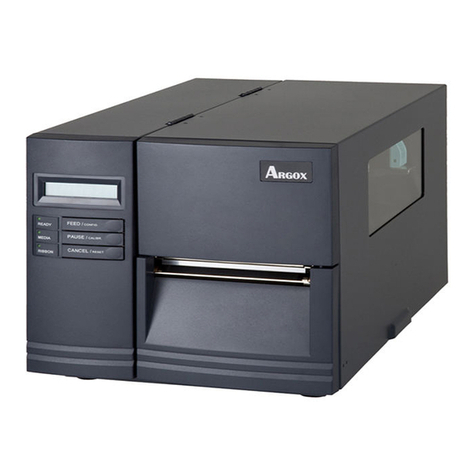
SATO
SATO Argox I4 Series User manual
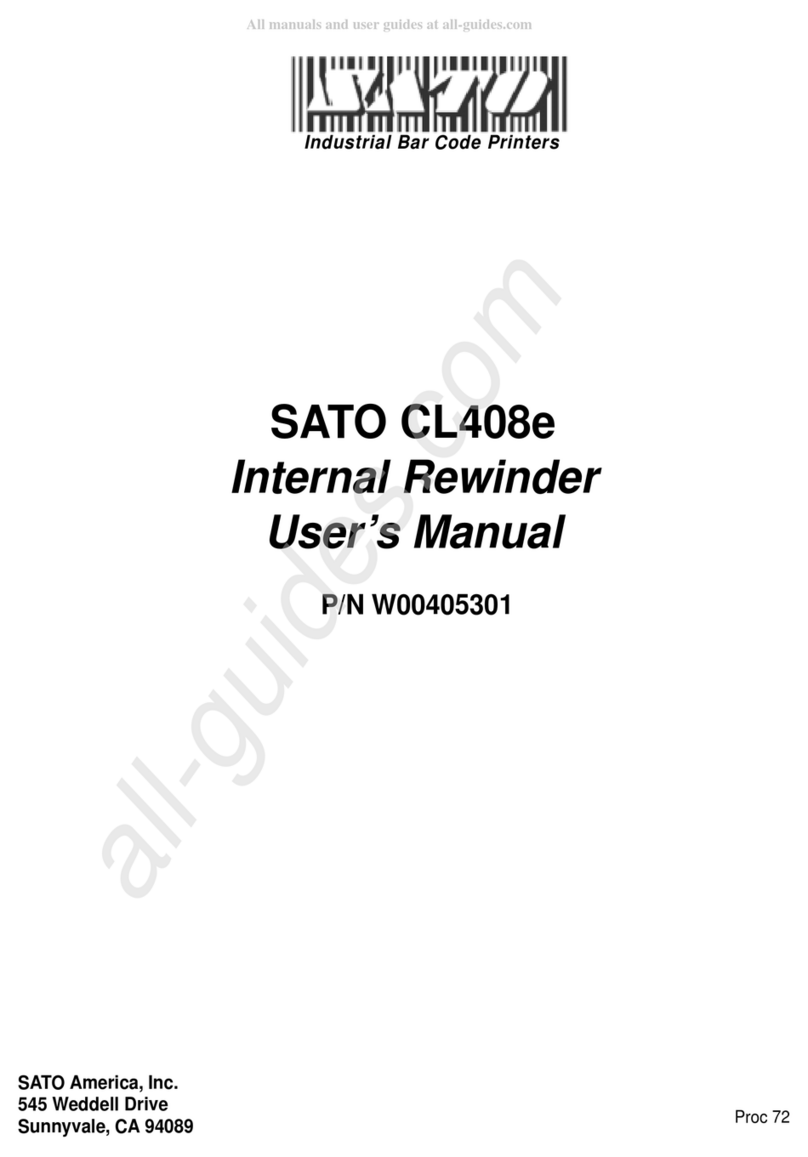
SATO
SATO CL408e User manual
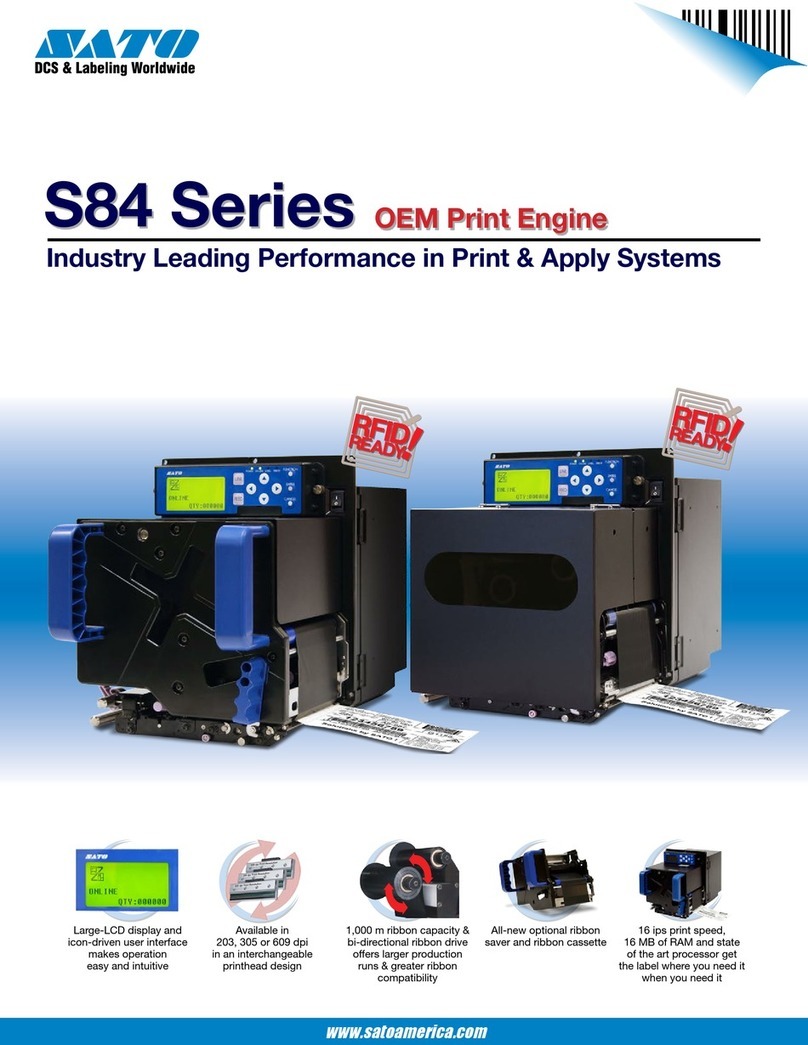
SATO
SATO S8408 Standard User manual

SATO
SATO PW4NX User manual

SATO
SATO XL4xxe User manual

SATO
SATO M-8460Se Series User manual

SATO
SATO /gt Series User manual
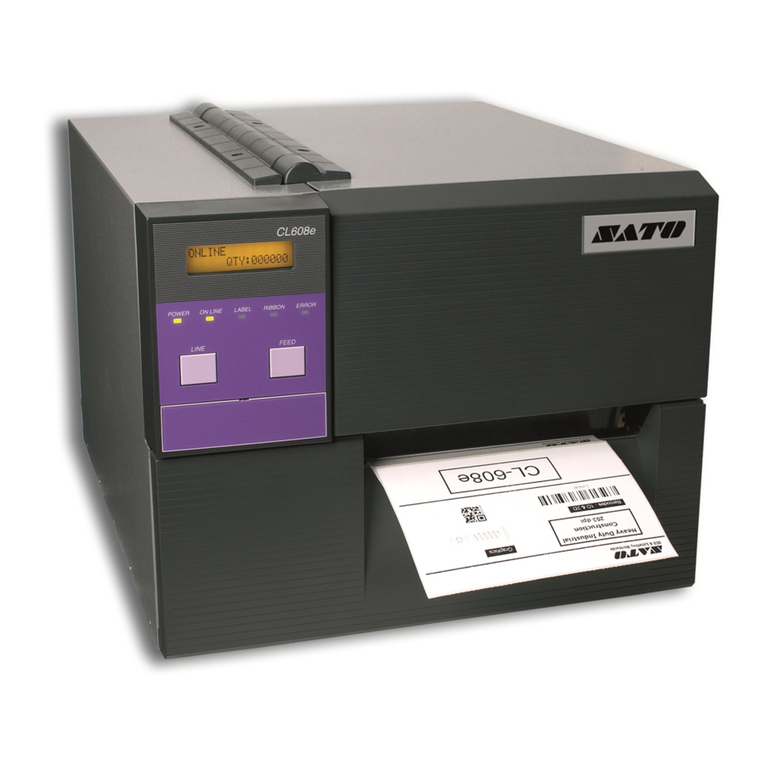
SATO
SATO CL608 User manual

SATO
SATO Argox X-1000VL User manual
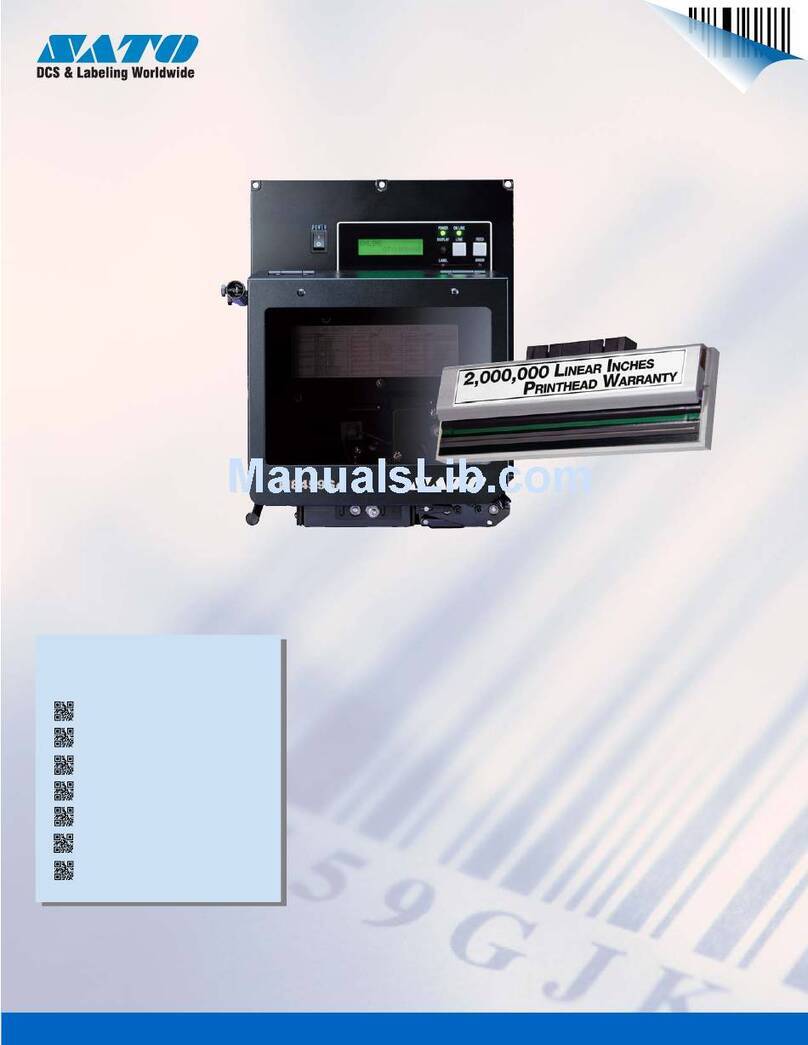
SATO
SATO M-8459Se Series User manual
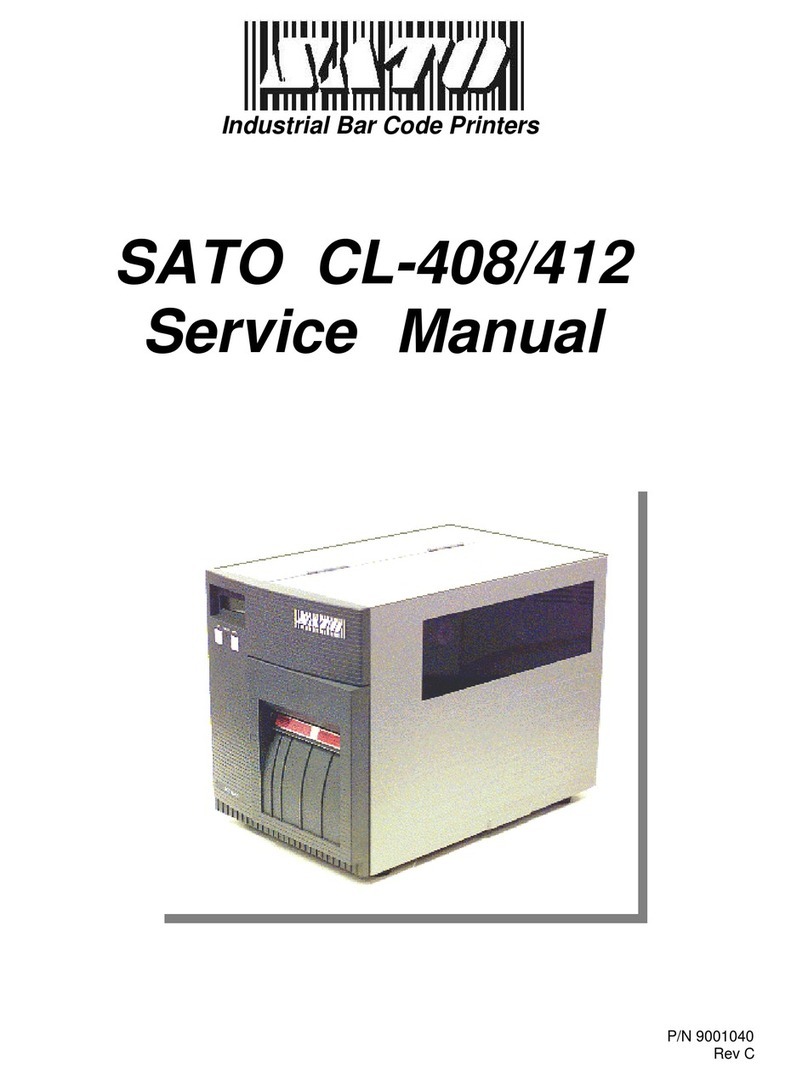
SATO
SATO CL-408 User manual

SATO
SATO M8490S User manual
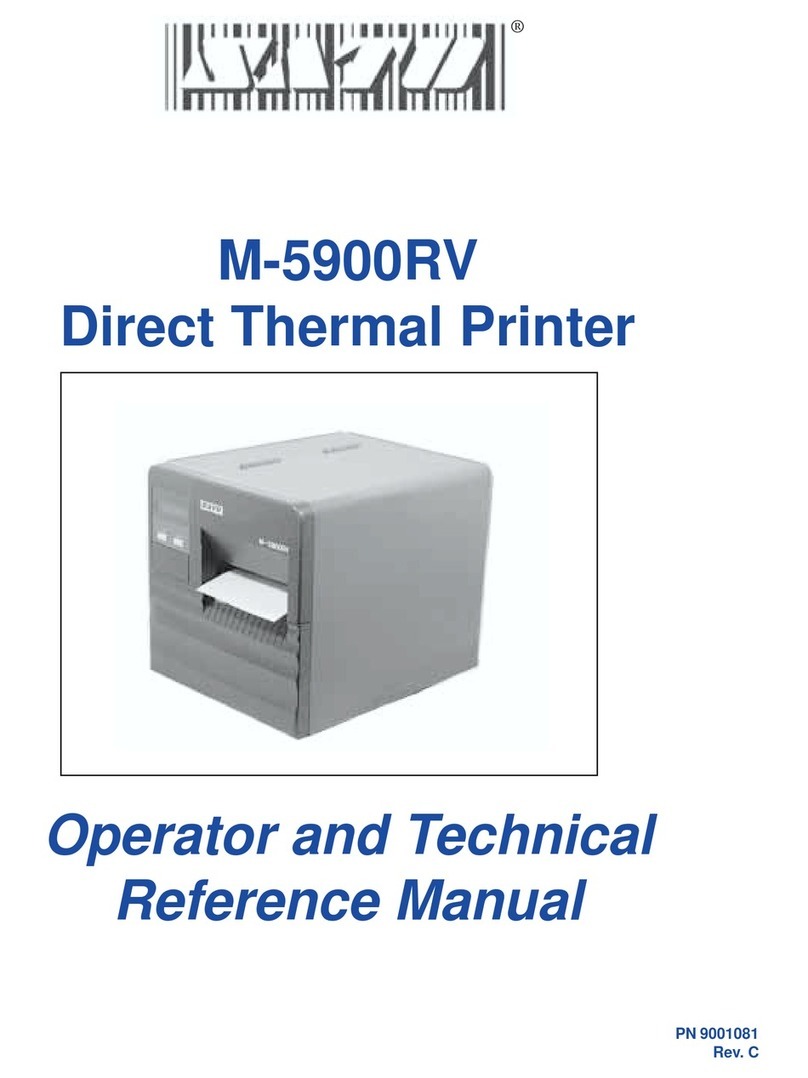
SATO
SATO M-5900RV Use and care manual

SATO
SATO M10e Series User manual

SATO
SATO M-8490Se Series User manual

SATO
SATO s84ex Owner's manual

SATO
SATO CL-408 User manual
